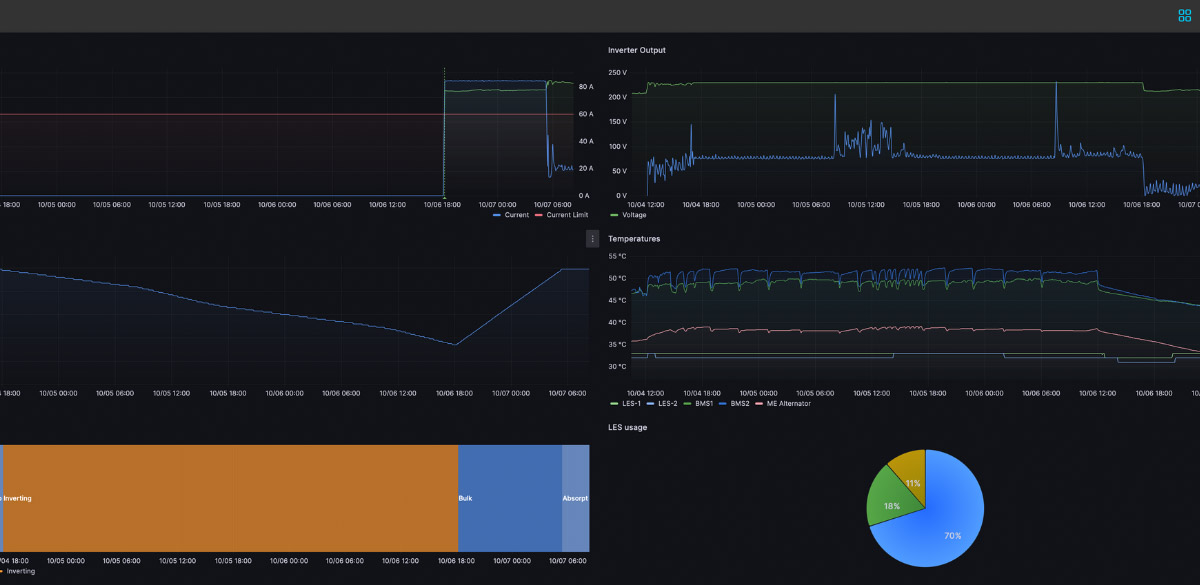At the forefront of this new technology are Phoenix One – who produce a one-stop tailored solution to your yacht’s requirements: A silent, environmentally focused, and efficient power solution that will revolutionise your experience. In this article, we will examine just how Phoenix One is helping steer people towards this new technology.
At present, there are different technologies classed as lithium-ion batteries, such as NMC, LFP, Lithium- Cobalt, -Titanium, and so forth. In this article we deal with LiFePO4 technology also abbreviated as LFP batteries, which have become the preferred standard for established integrators like Phoenix One.
Below we look at the top 10 facts you need to know about LFP batteries for yachts:
- Energy Density: Maximizing space and power
LFP batteries boast superior energy density, making them ideal for yachts where spac
e is at a premium. In comparison to traditional batteries, they are three to four times denser, allowing for up to 200kWh of energy in just 1m³. Over the last five years, this density has increased by an astounding 60%, revolutionizing the way we store energy on yachts.
- Longevity Redefined: Lifespan and sustainability
LFP batteries redefine longevity, outlasting lead-acid batteries by a significant margin. While these batteries may need replacement every two to three years, LFP batteries endure for at least eight years, provided they complete full cycles. With 3,000 cycles until the total capacity decreases to 80%, they ensure a robust and enduring power supply.
- Swift Rejuvenation: Fast charging for efficiency
One of the hallmarks of LFP batteries is their rapid charging capability due to its low internal resistance. Service banks benefit from a high charging current all the time, which results in less generator running hours. This leads to lower maintenance, wear and tear. Electric propulsion systems can be rapidly charged from the dock, within one to six hours, depending on the size of the yacht and capacity of the dock power.
- Power on Demand: Handling high discharge rates
LFP batteries shine in scenarios demanding bursts of power, such as operating air-conditioning units, galley, thrusters, or hydraulics and so forth. With the ability to provide over 7kW in a package of 50kg (one LFP battery) of constant power and peak of 12-14kW, these batteries are game-changers, ens
uring uninterrupted power supply, especially in demanding situations.
- Deeper Depths: Enhanced discharge capabilities
Unlike lead-acid batteries, LFP batteries tolerate deeper discharges without compromising performance. With an 80% Depth of Discharge (DoD) sustaining 3,000 cycles, these batteries offer exceptional usability and longevity, translating to over eight years of uninterrupted functionality. Even with heavy usage – discharging down to 10% or lower will not break or damage the batteries unlike the lead-acid ones which need much more care in a similar situation.
- Lightness Personified: Weight reduction for efficiency
The lightweight design of LFP contributes to significant weight savings on yachts. Although this advantage might not be paramount for all vessels, in the realm of regattas and high-performance sailing, the impact is notable. Additionally, the modular distribution of these batteries ensures a balanced weight distribution across the yacht.
- Minimal Maintenance: Hassle-free operation
LFP batteries demand minimal maintenance, marking a departure from the usual routines. Regular visual inspections and yearly torque checks suffice, highlighting the hassle-free nature of these devices.
Phoenix One has an innovative cloud monitoring system (NEST) that offers insights into the battery’s real time and historical performance, aiding in proactive enhancements for better overall efficiency. Check out our online demo at https://nest.phoenixone.com/demo
- Safety First: Built-in protection mechanisms
Modern LFP batteries come equipped with a slew of safety features, including thermal runaway protection, overcharge prevention, over-current protection, etc. However, understanding your system’s vital signs, such as temperature during charging or high-power usage, is crucial. Implementing a robust onboard monitoring and control system adds an extra layer of security, ensuring a safe and smooth yachting experience. If you are thinking of upgrading your monitoring & control systems, contact us.
- Cost Efficiency: A long-term investment
While the initial cost of LFP batteries may be higher than their traditional counterparts, their extended lifespan, superior efficiency, and reduced maintenance costs render them highly cost-effective in the long run. Incorporating those batteries into your vessel not only changes the service bank but opens possibilities for powering the entire boat’s facilities from them without the constant use of generators. It’s an investment in comfort, reliability, and good sense.
- Green Credentials: A Sustainable Choice
LiFePO4 batteries cont
ribute to a greener environment, devoid of toxic materials like lead and sulfuric acid. Moreover, their recyclability lessens their overall environmental impact. Opting for reliable manufacturers with a strong commitment to ethical and eco-friendly practices further amplifies the positive impact, aligning with the global goal of sustainable energy usage.
Conclusion:
Phoenix One remain steadfast in the pursuit of a greener future. Their dedication to integrating LFP batteries is clear. Consulting design experts and integrators like Phoenix One are crucial for this exciting journey – they grasp the unique needs of your yacht, ensuring a smooth transition into the realm of innovative technology.
Embrace the potential of LFP batteries and sail toward a future where efficiency and reliability reign supreme. Delve into the details of these future-defining batteries, meticulously outlined in our top ten points. These key highlights undoubtedly demonstrate the seamless convergence of intelligent technology and eco-consciousness.
Contact us: sales@phoenixone.com


























0 Comments